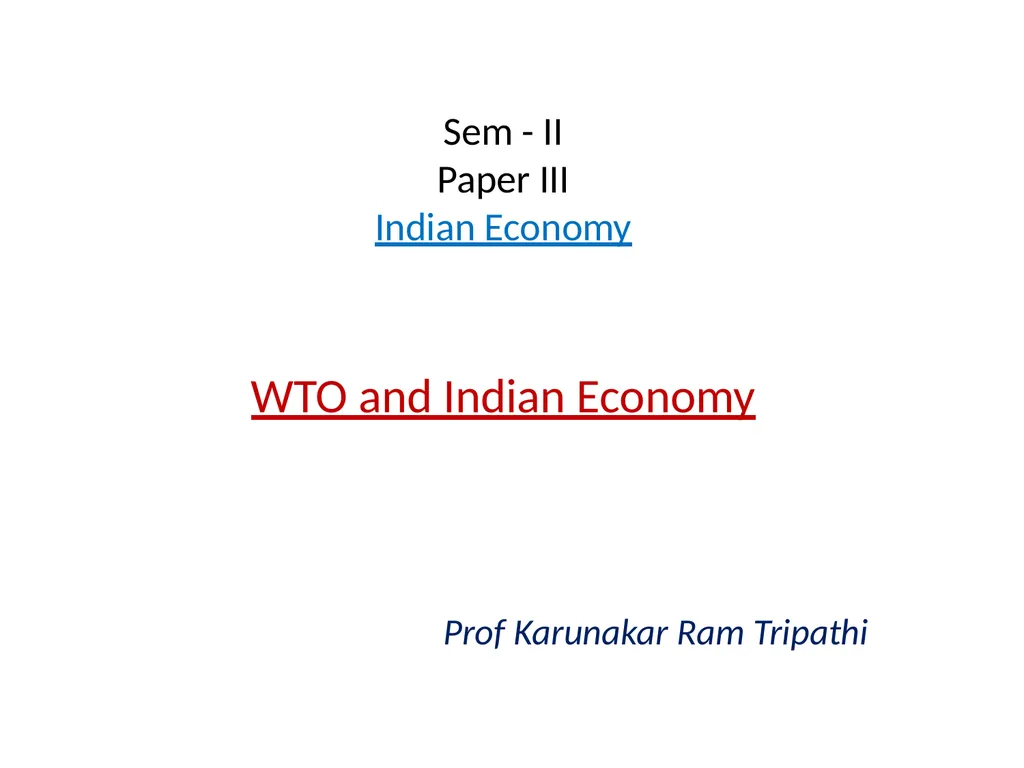
Sem - II Paper III Indian Economy WTO and Indian
Author: olivia-moreira | Published: 2025-05-24
Description: Sem - II Paper III Indian Economy WTO and Indian Economy Prof Karunakar Ram Tripathi World Trade Organisation (WTO) WTO is an international organization set up as a permanent body and is designed to play the role of a watchdog in the
Download Presentation
Download the PPT/PDF: Download
Transcript:
Loading transcript…